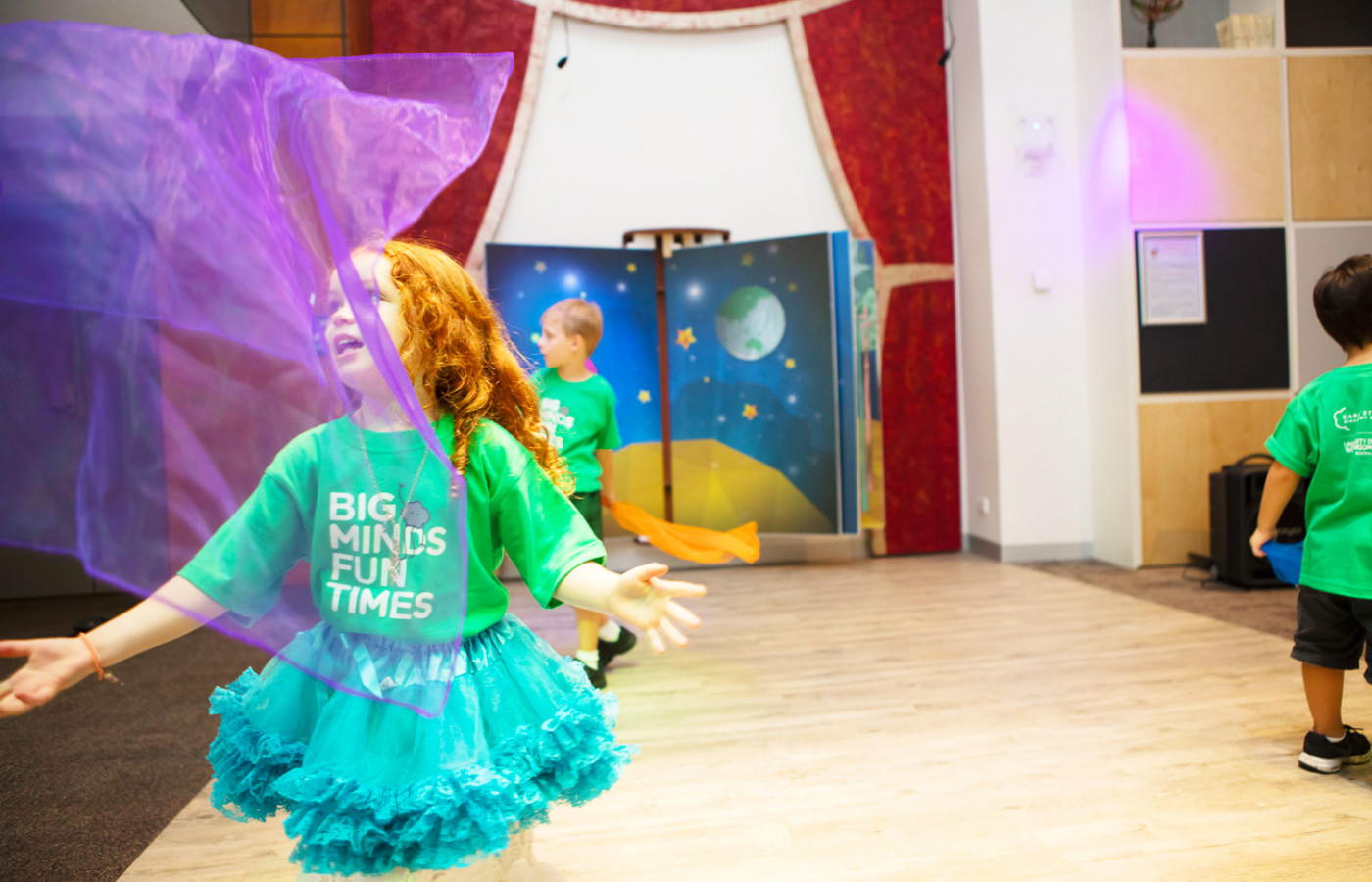Rainbow ribbon dancing

Rainbow ribbon dancing
Dancing with ribbons or streamers with your child
Materials Required
- Rainbow ribbons
- Pieces of coloured materials
- Relaxing and calming music
Scarves
Play experience profile
-
Ages:
-
Min Playtime5 - 15 Minutes
-
Energy LevelActive play
-
Messiness Rating
-
EYLF Outcomes
Play Experience Preparation
Find an open space where your child can move freely and dance around the room - Make sure the floor is free from any trip hazards or obstaclesExperience Steps
- Introduce your child to your rainbow ribbons, scarves or pieces of materials.
- Talk to your child about the various colours.
- Sing "I can sing a rainbow song".
- Play some calm and relaxing music and encourage your child to dance around the room with the rainbow ribbons.
- Encourage your child to wave the rainbow ribbons up high, to the side, down low, fast and slow.
- Have fun dancing around the room with your child.

What to talk about, or questions to ask during the experience
- Colours e.g. red, yellow, pink, green, purple, orange and blue
- Wave up high and wave down low
- Waving fast and waving slow
- Dynamics: loud and soft
Build on this...
- Read the book "I can sing a rainbow"or talk about rainbows - find images of rainbows in the environment using digital technology.
- Drawing rainbows with chalk on the ground or a chalkboard, or with pencils/textas on paper.
- Make sounds and music with things you have in the house - instruments, containers, pots and pans, etc.
- Play "musical statues" by freezing when the music stops.
WHO guidelines for physical activity and sedentary behaviour
Provide evidence-based public health recommendations for children, adolescents and adults on physical activity.
Learn more
Provide evidence-based public health recommendations for children, adolescents and adults on physical activity. Learn more
This is a physical activity which will help your child meet their recommended daily activtity level.
EYLF Outcomes
The Early Years Learning Framework has been designed for use by early childhood educators working in partnership with families, children’s first and most influential educators.
View PDF
The Early Years Learning Framework has been designed for use by early childhood educators working in partnership with families, children’s first and most influential educators. View PDF
- Children develop dispositions for learning such as curiosity, cooperation, confidence, creativity, commitment, enthusiasm, persistence, imagination and reflexivity
- Children develop knowledgeable and confident self identities
- Children feel safe, secure, and supported
EYLF Principle
Principle 3: High expectations and equity. Children progress well when they, their parents and educators hold high expectations for their achievement in learning.
EYLF Practice
Practice: Intentional teaching. Intentional teaching is deliberate, purposeful and thoughtful. They use strategies such as modelling and demonstrating, open questioning, speculating, explaining, engaging in shared thinking and problem solving to extend children’s thinking and learning.
Author:


